Agave, Honey, Stevia, Coconut Palm – the List Goes On…
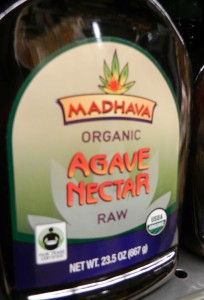 A few weeks ago I was at Whole Foods Market ordering a smoothie from their menu and asked for a modification of their listed ingredients, as I often do. I asked that they use Honey instead of Agave and use Kale instead of Spinach. Generally the same people take my order, and this time one of the Team Members asked me why I don’t use Agave… was it just the taste I didn’t like? I stood there for a moment and really couldn’t remember exactly what it was. I had Agave on my “pick something else instead” mental list since it started popping up everywhere several years ago. Why? I had to reply that I couldn’t remember what it was that made me decide not to use it – I had to go track that information down and get back with her. So, when I finally found and read my notes and pulled up a bit more information, I thought I’d write a post about sweeteners, what I generally use, and why… and maybe I’ll give Agave a try now.
A few weeks ago I was at Whole Foods Market ordering a smoothie from their menu and asked for a modification of their listed ingredients, as I often do. I asked that they use Honey instead of Agave and use Kale instead of Spinach. Generally the same people take my order, and this time one of the Team Members asked me why I don’t use Agave… was it just the taste I didn’t like? I stood there for a moment and really couldn’t remember exactly what it was. I had Agave on my “pick something else instead” mental list since it started popping up everywhere several years ago. Why? I had to reply that I couldn’t remember what it was that made me decide not to use it – I had to go track that information down and get back with her. So, when I finally found and read my notes and pulled up a bit more information, I thought I’d write a post about sweeteners, what I generally use, and why… and maybe I’ll give Agave a try now.
What Makes One Sweetener Different from Another?
Just as with any other food product, it’s best to see what a particular sweetener is “really” made out of. Some products have fillers or bulk. Bulk is generally added to enhance or mute the taste of the product or to “add” something because it is less costly then the primary ingredient. Ultimately there is only a percentage of the product that you think you are buying in the container and the rest is “something” else. This is common in spices, and as I mentioned in my previous article it is very common with laundry detergents. Okay, detergent is not a food item, but one thinks they are getting more for their money when they carry out a heavy box of detergent, when ¼ the size box would do the same job – same concept as some food products.
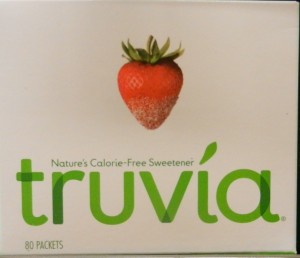
And, some products really aren’t what they were, meaning they’ve been so processed that the chemical composition has changed (which often makes it difficult for our body to absorb the natural nutrients). Or, the nutrients have been stripped out when processing the food, or killed off altogether. Different manufacturers or lines of products are processed differently. An example of this would be raw milk vs. homogenized milk, ultra pasteurized, skim vs. whole milk, powdered milk, etc. These are all labeled “milk”, yet some contain live enzymes, and vitamins that are easy to absorb. And others really don’t have any nutrients left (and they try to add it back in afterward), no living enzymes and are often a very different texture.
Here are some components about sweeteners and how I feel about them:
| Sweetener | Would I Recommend It? | Notes |
| Agave | YES – but be very picky! | So, let’s start with the one that prompted me to write this post. Agave I’d actually say both yes and no. There are some that I would now consider buying and many that I would not. Depending on the Agave and how it is processed is a big factor with this product. There is traditionally made Agave, but there is also the are highly processed. In addition, many of them are about 70 to 80 percent fructose, which is worse than HFCS. I’d suggest looking for agave that has been traditionally processed and has a fructose level that is below 50% – there are plenty of good options available! |
| Sugar (white granulated and powdered sugar) | NO | Definitely on my “don’t buy” list. First, there are so many other alternative sweeteners that are not so highly refined and processed. There is no nutritional value to sugar and it certainly causes a lot of health issues, not to mention, impedes one from burning fat. And, don’t be fooled by the “Raw Sugar” packets you see in the coffee shops and restaurants. It’s not really “raw” for one, and second, it has been processed and refined much like the “white” sugar. |
| Brown Sugar | NO | This is the ‘brown sugar’ typically purchased at a grocery store in the baking isle. It is simply white sugar with a small amount of molasses added back in (and is a little moister), but still highly refined and processed. |
| Turbinado (aka “raw sugar”) | NO | It’s refined and processed, though not quite as much as white sugar. It contains a little molasses, and is a little moister. It’s also commonly labeled as “raw sugar”. I’d prefer other sugars such as Sucanat or Muscovado. |
| Sucanat and Rapadura | YES | Great for baking too. Unprocessed Evaporated cane juice. It’s still sugar, but it’s minimally unrefined and still contains some mineral content. Also referred to as raw sugar. It’s the sugar cane juice heated and allowed to cool, and does not go through an evaporation process and purification and the retains the natural molasses with its nutrients, and therefore contains less sucrose than white sugar. Sucanat is a registered trademark, so other companies make other products such as Rapadura (which is also trademarked) with the same process. |
| Muscovado (also known as Barbados)– | YES | Great for baking too. Unprocessed Evaporated cane juice. It’s still sugar, but it’s minimally unrefined and still contains some vitamins and minerals. It’s the sugar cane juice heated and other ingredients are added to help remove impurities (which are skimmed out). Often coconut milk and lime juice are added. It’s then allowed to cool, and does not go through an evaporation process and purification and therefore retains the natural molasses with its nutrients. It contains less sucrose than white sugar. It’s high in potassium, calcium, magnesium and iron. It’s very moist and has a stronger flavor. |
| Molasses | YES | It’s a byproduct of refining sugar syrup, where most of the sucrose has been crystallized and removed (but not all). However, molasses still contains trace amounts of vitamins and minerals, such as calcium, magnesium, potassium and iron. |
| Coconut Palm Sugar | YES | I personally have not tried Cocount Palm Sugar, but have heard that’s it’s yummy. After researching it a bit, I’d say it’s a nice sweetener that would also be great for baking. It’s unrefined and still contains some mineral content. |
| Artificial sweeteners: Sucralose (Splenda), aspartame (Equal, NutraSweet, etc.), saccharin (Sweet’N Low”), cyclamate (Sucaryl) |
NO | Though they may not cause a spike in ones blood sugar, there is nothing “good” in these chemicals, and a lot that to be concerned about with regard to what it does in our body. For example, Sucralose is processed with chlorine. Aspartame in it’s dry form is 11% methanol, which is converted by our bodies to a toxic substance…. the list goes on with what is bad about these artificial sweeteners. |
| Stevia | Yes, but look carefully at the labels. I do NOT recommend ‘Truvia’ or ‘Stevia in the Raw’ for the reasons mentioned here —> | Stevia is an herb and in natural form should be green or brownish green when dried. Pure Stevia can be very sweet and also a little bitter. Only very little would need to be used compared to most sweeteners. A liquid version can be made easily with a Stevia plant (using the leaves) and some alcohol. My suggestion is to use a quality brand (which is generally less bitter) and find it pure (either in leaf form, liquid or pure powder with no bulk added). The fresh or dried stevia leaves can be put directly in a hot cup of tea. Some brands add “other” ingredients (called “bulk”) to dilute the bitterness (especially in powders). I wouldn’t bother with these brands unless you know what these other ingredients are and are okay with them. I still question how they make the white powder version – what processing method has it gone through to create this white powder? Stevia is probably the best choice for those who have diabetes as it rates 0 on the glycemic index (great for coffee and such) and can be found in it’s natural form. I would first recommend leaves, then liquids and lastly pure 100% powder, and would not recommend any that I saw that had added ingredients. |
| Corn Syrup (aka glucose syrup) | NO | Corn Syrup (aka glucose syrup), like Karo, is different than High-frutose corn syrup, yet it is still highly processed corn starch (or sometimes wheat, potatoes or other starches). There is no such thing as a natural corn syrup. It goes through major enzymatic processing to break down the pulp of corn (cornstarch) into glucose. Then the glucose is heated and turned into corn syrup. It is very similar to sugar, but it does not crystallize. |
| High-fructose corn syrup (HFCS) | NO | I don’t need to tell you all the bad stuff here, and though it is generally not sold to consumers, it is in tons of processed products. HFCS is created with additional processing of corn syrup and has very high levels of fructose. If buying drinks, bread, or packaged food, I would suggest looking for this on the label and avoid it.Fructose must be broken down in the liver and the liver may become overworked by a diet heavy in fructose. |
| Maple Syrup | YES | Okay, I’m talking real maple syrup here, not the fake stuff. It must be produced from pure sugar maple sap in order to be called “pure maple syrup” – so look for that on the label. Maple syrup varies slightly in taste and nutritional level depending on when the sap is harvested and the weather. Maple syrup does have some, though small amounts, of nutrients such as calcium, magnesium, potassium, and manganese. It also has less carbs than an equal amount of sugar. |
| Sorghum Syrup | YES | Sorghum Syrup is sometimes referred to as molasses, though it is not actually molasses. I haven’t had a need to buy this as I am fine with the honey and maple syrup in our house, but I certainly would if the others weren’t available for some reason. It’s natural, and I would probably bake with it. Maybe someone can tell me how this tastes compared to maple syrup or honey. |
| Raw Honey | YES – “Raw” honey. | It is recommended that infants not use honey until they are at least 6 months old. Raw honey contains many nutrients: vitamins A, C, D, E and high concentrations of the B-complex vitamins including thiamin, riboflavin, niacin, pantothenic acid. Raw honey also has beneficial enzymes and other nutrients. One of the enzymes raw honey contains is amylase, which aids in digestion. High heat kills most of the enzymes and some vitamins, so pasteurized honey doesn’t have the health benefits as raw honey does. And, raw honey has a low glycemic index. Pollen is beneficial in honey, but most honey sold in stores have been ultra filtered and no longer have it. When purchasing, it’s best to find a local source (like at a farmers market or health store). If you cannot find it at a local source, I suggest to buy Organic Honey – you have a better chance of it having some pollen left. It is best used cool or at room temperature. |
Fructose and Glucose – What Do They Do?
As a general rule, I prefer my ingredients to be natural and only minimally processed (such as sauerkraut, yogurt, etc.) – which includes the sweeteners that I use. I won’t go into all the chemical makeup of the sweeteners and how it affects our body, but I will mention that both fructose and glucose is not something that we should consume excessively though they are each simple sugars and do occur naturally in foods. In natural foods though, there are fiber, vitamins and/or minerals, enzymes, etc. and these allow the fructose and glucose to be absorbed much slower.
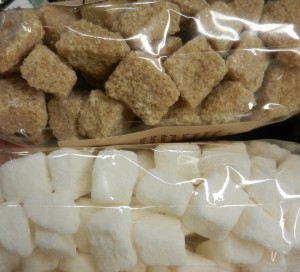 Too much fructose is difficult for the liver to process and when it can’t processed fast enough, it makes fats from it and releases it as triglycerides into the bloodstream (which is not a good thing). Glucose is a simple sugar that provides energy to the body. When too much glucose is released into the bloodstream and the blood-sugar level rises quickly, it causes insulin spikes. Skipping the description of a few steps in the process here – ultimately, with a large insulin release, the glucose is more likely to be stored as fat rather than be used as fuel. In addition, a big release of insulin would cause a rapid drop in blood sugar, which would make one feel hungry. Some sweeteners have a higher glycemic load which is also a factor to be aware of, especially for those who have diabetes.
Too much fructose is difficult for the liver to process and when it can’t processed fast enough, it makes fats from it and releases it as triglycerides into the bloodstream (which is not a good thing). Glucose is a simple sugar that provides energy to the body. When too much glucose is released into the bloodstream and the blood-sugar level rises quickly, it causes insulin spikes. Skipping the description of a few steps in the process here – ultimately, with a large insulin release, the glucose is more likely to be stored as fat rather than be used as fuel. In addition, a big release of insulin would cause a rapid drop in blood sugar, which would make one feel hungry. Some sweeteners have a higher glycemic load which is also a factor to be aware of, especially for those who have diabetes.
Where Can We Buy Some of the Good Stuff?
There are a multitude of sweeteners and a multitude of brands – some are better to use with raw food and some types are better than others to use when cooking. I know it can be rather overwhelming when trying to make decisions on sweeteners and that’s why I use just a few and pick brands I tend to trust and stick with… I like to make it simple when I do my shopping. Here are a few sources that I have used or would recommend for sweeteners on my Resource-List/Sweeteners&Cacao page.
In Conclusion
Whenever I hear numbers about sugar consumption, it astounds me. In 2010, according to USDA sources, Americans consumed 66 pounds of refined sugar per person AND 64.5 pounds of corn-derived sweeteners and only about 1.5 pounds of honey and edible syrups (and this did not account for any artificial sweeteners).
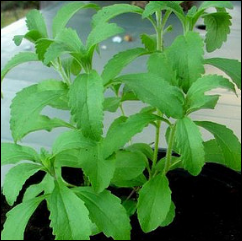 There are two factors with regard to sweeteners – the amount used and the type used. Just because it may be natural (or less refined), our bodies still need to metabolize it. So, though natural sweeteners may not be totally void of nutrients and are not refined and processed with chemicals, it’s best to still be aware of not using too much (which means very little), particularly if one tends to eat a lot of carbohydrates such as breads, wheat, rice, etc. It’s definitely a challenge I face occasionally, especially late in the afternoon. The first step is certainly awareness.
There are two factors with regard to sweeteners – the amount used and the type used. Just because it may be natural (or less refined), our bodies still need to metabolize it. So, though natural sweeteners may not be totally void of nutrients and are not refined and processed with chemicals, it’s best to still be aware of not using too much (which means very little), particularly if one tends to eat a lot of carbohydrates such as breads, wheat, rice, etc. It’s definitely a challenge I face occasionally, especially late in the afternoon. The first step is certainly awareness.
Comments? Any surprising things that you have found out with your sweeteners? Do you know of any great brands to recommend? COMMENT section at the bottom of the page.
Subscribe to get future posts on subjects that may interest you by clicking here and also share this site with your friends by using the social media icons directly below or on the right side of the page.
This post is shared at: thank your body thursday, fight back fridays, simple lives thursday, fresh bites friday.
sources:
http://www.agmrc.org/commodities__products/grains__oilseeds/sugarcane_profile.cfm
http://en.wikipedia.org/wiki/Corn_syrup
http://en.wikipedia.org/wiki/High_fructose_corn_syrup
http://www.wisegeek.com/what-is-sucrose.htm
http://www.trustedhealthproducts.com/blog/study-aspartame-leads-to-autism-ms-cancer
photo credit: Judy@LHNH, hardworkinghippy
disclosure: cmp.ly/4 and cmp.ly/5
Disclosure: Please know that if you make a purchase using a link on this post or site, I may earn a small commission. Some of the links are affiliate links, and when you click them you allow me to cover a small portion of the cost of this blog. I am very grateful for your support of this site - Thank You! You can read all the fine print here
The above was insightful and very helpful, thank you very much. What are your views on Xylitol?
Thank you ,
Dee Ann 🙂
-
Hi DeeAnn, Thank you for your comments! Sorbitol, mannitol, and xylitol are all sugar alcohols, and though comes from natural sources, it’s extracted (and with SCD or GAPS they do not recommend it) it’s not completely digestible. I think it is far better than chemical substitutes, and I do chew gum on rare occasion with xylitol, but in general I prefer to use other natural sweeteners. Although, if one has an issue with candida, it may be one of the few preferred alternatives.
September 19, 2013 — 21:02




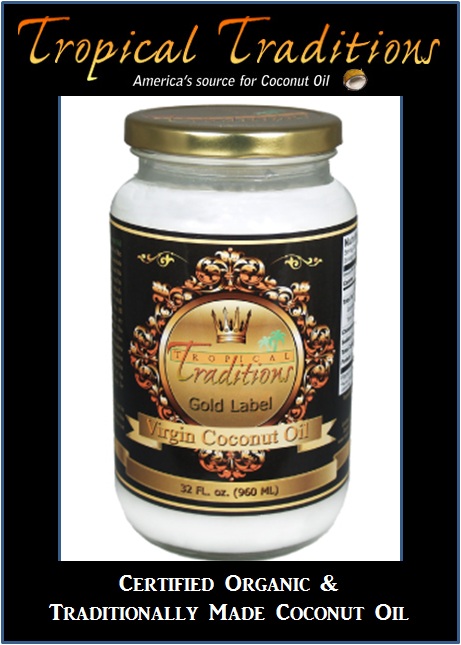

Great Article! I use the coconut sugar and coconut nectar. My husband is diabetic and they are both low glycemic which helps when he needs a little something sweet. I recently used it to make Cashew Cookies and everybody loved them! Thank you for this great article!